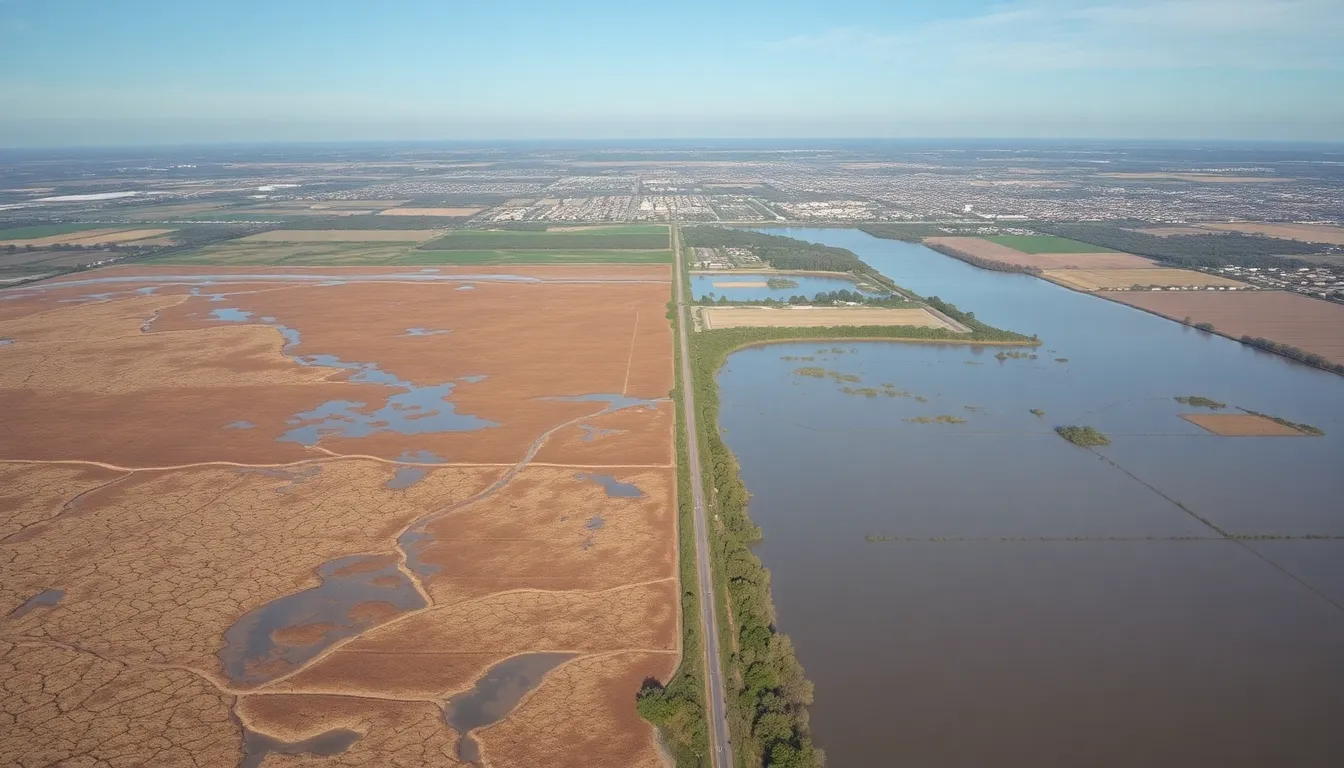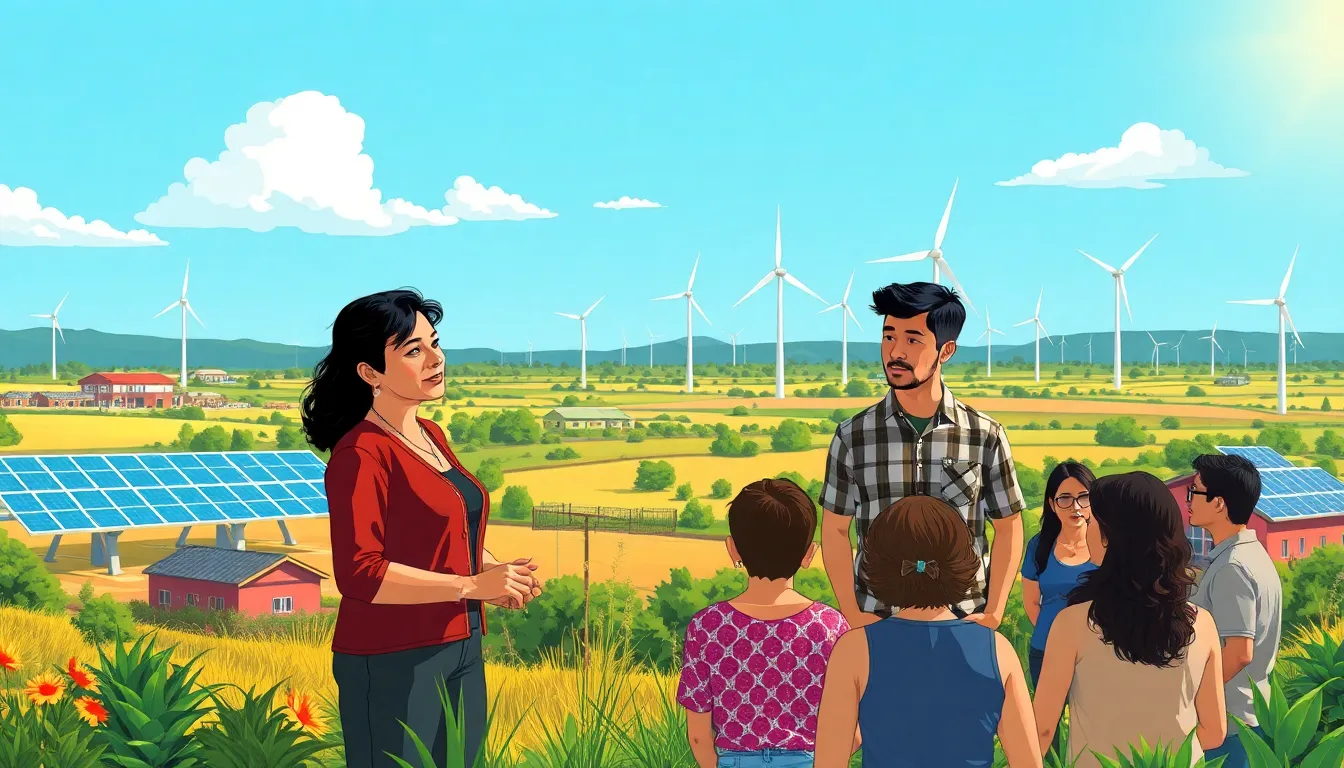Texas isn’t just about cowboy boots and BBQ; it’s also home to a rapidly evolving environmental landscape that demands attention. From the sprawling deserts to the lush piney woods, the Lone Star State faces unique challenges and opportunities in its quest for sustainability. With climate change knocking at the door and regulations shifting faster than a tumbleweed in a windstorm, staying updated on Texas environmental news is crucial for anyone who cares about the future.
In this vast and vibrant state, environmental issues can feel as big as the Texas sky. Whether it’s tackling pollution in the Gulf of Mexico or promoting renewable energy initiatives, there’s always something happening. So grab your favorite drink, sit back, and dive into the latest environmental happenings that are shaping Texas. Who knew saving the planet could be this entertaining?
Table of Contents
ToggleRecent Developments in Texas Environmental News
Texas recognizes the pressing challenges surrounding its environmental landscape and actively seeks solutions. Recent actions reflect the state’s commitment to improving air quality and conserving water.
Air Quality Initiatives
State officials launched programs aimed at reducing emissions from industrial sources. The Texas Commission on Environmental Quality reported a 10% decrease in ozone levels in urban areas over the last year. Citizens participate in community workshops focused on enhancing awareness and engagement with air quality issues. Monitoring stations are being upgraded to provide real-time data on pollution levels, improving transparency. Local governments are also incentivizing public transit use, reducing traffic congestion and greenhouse gas emissions.
Water Conservation Efforts
New legislation prioritizes water efficiency in residential and commercial settings. Recent statistics show Texas faces a projected shortfall of 1.6 million acre-feet of water annually by 2030. Conservation initiatives funded by state grants encourage the implementation of sustainable practices. Awareness campaigns educate residents on the importance of water-saving techniques, including xeriscaping and rainwater harvesting. Collaboration among state agencies, municipalities, and nonprofits strengthens regional efforts to manage water resources effectively.
Impact of Climate Change in Texas

Climate change significantly impacts Texas, prompting urgent responses across the state. Increased temperatures and changing weather patterns drive severe drought conditions and extreme flooding events.
Drought Conditions
Drought conditions in Texas have intensified, leading to substantial water shortages. The Texas Water Development Board reports that some regions experience severe drought levels, affecting agriculture and natural ecosystems. Farmers adapt by implementing water-saving techniques, while urban areas focus on efficient water management strategies. According to recent data, the state anticipates a shortfall of 1.6 million acre-feet of water annually by 2030. Policymakers advocate for collaboration among stakeholders to enhance regional water conservation efforts.
Flooding Events
Flooding events pose significant challenges, particularly in coastal regions. Texas has experienced an increase in heavy rainfall, resulting in flash floods that threaten infrastructure and safety. The National Weather Service indicates that extreme rainfall has nearly doubled in some areas over the past few decades. Communities face recurring damages, prompting the necessity for resilient infrastructure development. Public awareness campaigns encourage residents to understand flood risks and prepare accordingly, strengthening overall community safety.
Legislative Actions Affecting the Environment
Texas lawmakers actively pursue legislative actions to address pressing environmental issues. These measures aim to enhance sustainability and protect natural resources.
New Regulations
Recent regulations target air and water quality improvements across Texas. Strategies include stricter emissions standards for industrial facilities, fostering a cleaner environment. Local governments also receive incentives to establish green infrastructure projects that manage stormwater. Enhanced monitoring requirements ensure compliance with pollution limits. These efforts collectively support a healthier ecosystem while addressing public health concerns.
Key Policy Changes
Significant policy changes reshape Texas’s environmental landscape. The state’s Renewable Energy Portfolio Standard underwent adjustments, increasing the percentage of energy generated from renewable sources. Furthermore, incentives for solar energy installations are now more accessible, encouraging homeowners to adopt clean energy solutions. Water conservation measures also gained traction, with policies aimed at reducing overall consumption. These changes reflect a commitment to sustainable development and responsible resource management.
Community Involvement and Activism
Community involvement plays a vital role in addressing Texas’s environmental challenges. Engaging residents enhances awareness and fosters activism.
Grassroots Movements
Grassroots movements in Texas have gained momentum, focusing on local environmental issues. Community members organize rallies and campaigns to raise awareness about pollution and conservation efforts. Activists often collaborate with local organizations to amplify their voices. Key victories include successful pushes for stricter air quality regulations and enhanced recycling programs. Additionally, these movements encourage sustainable practices, like community gardens and clean-up events, promoting a sense of shared responsibility. Activism strengthens community bonds and cultivates a culture of environmental stewardship.
Educational Programs
Educational programs throughout Texas aim to equip residents with knowledge about environmental issues. Schools and organizations develop curriculum emphasizing sustainability and conservation practices. Workshops and seminars focus on topics such as water conservation techniques and renewable energy benefits. Partnering with local experts ensures that participants receive up-to-date information. Engaging youth through interactive experiences fosters long-lasting environmental awareness and responsibility. These initiatives help cultivate a generation dedicated to environmental advocacy.
Future Outlook for Texas Environmental News
The future for Texas environmental news reflects trends and concerns that impact sustainability across the state.
Predictions and Trends
Experts predict a sustained focus on renewable energy technologies in Texas, which aims to diversify its energy sources. Participation in solar and wind energy projects shows significant growth, positioning the state as a leader in clean energy production. Furthermore, urban areas expect improvements in public transportation infrastructure, promoting reduced emissions and enhanced air quality. Community initiatives increasingly emphasize sustainable landscaping practices, such as xeriscaping, helping to conserve water resources. As legislative actions progress, stricter environmental regulations regarding emissions are anticipated, contributing to overall improvements in air and water quality.
Areas of Concern
Water scarcity emerges as a pressing challenge, particularly with a projected annual shortfall of 1.6 million acre-feet by 2030. This shortage threatens agriculture and urban consumption, urging immediate action for conservation efforts. Increasing flood events pose additional risks, particularly in coastal areas, where heavy rainfall strains infrastructure. Air quality remains a significant issue due to industrial emissions, necessitating ongoing monitoring and stricter regulations. Climate change will continue to intensify these concerns, prompting advocacy for resilient infrastructure and effective public awareness campaigns.
Texas stands at a pivotal moment in its environmental journey. As the state grapples with significant challenges like water scarcity and air quality issues, the commitment to sustainability and community involvement is more critical than ever.
Recent initiatives and legislative changes reflect a proactive approach to environmental stewardship. With grassroots movements gaining traction and innovative solutions emerging, Texas is poised to make meaningful strides in addressing its environmental concerns.
The future holds promise for a cleaner and more sustainable Texas. Continuous engagement with environmental news will empower residents to take action and advocate for a healthier ecosystem. Staying informed is the first step toward fostering a resilient and sustainable future for all Texans.


